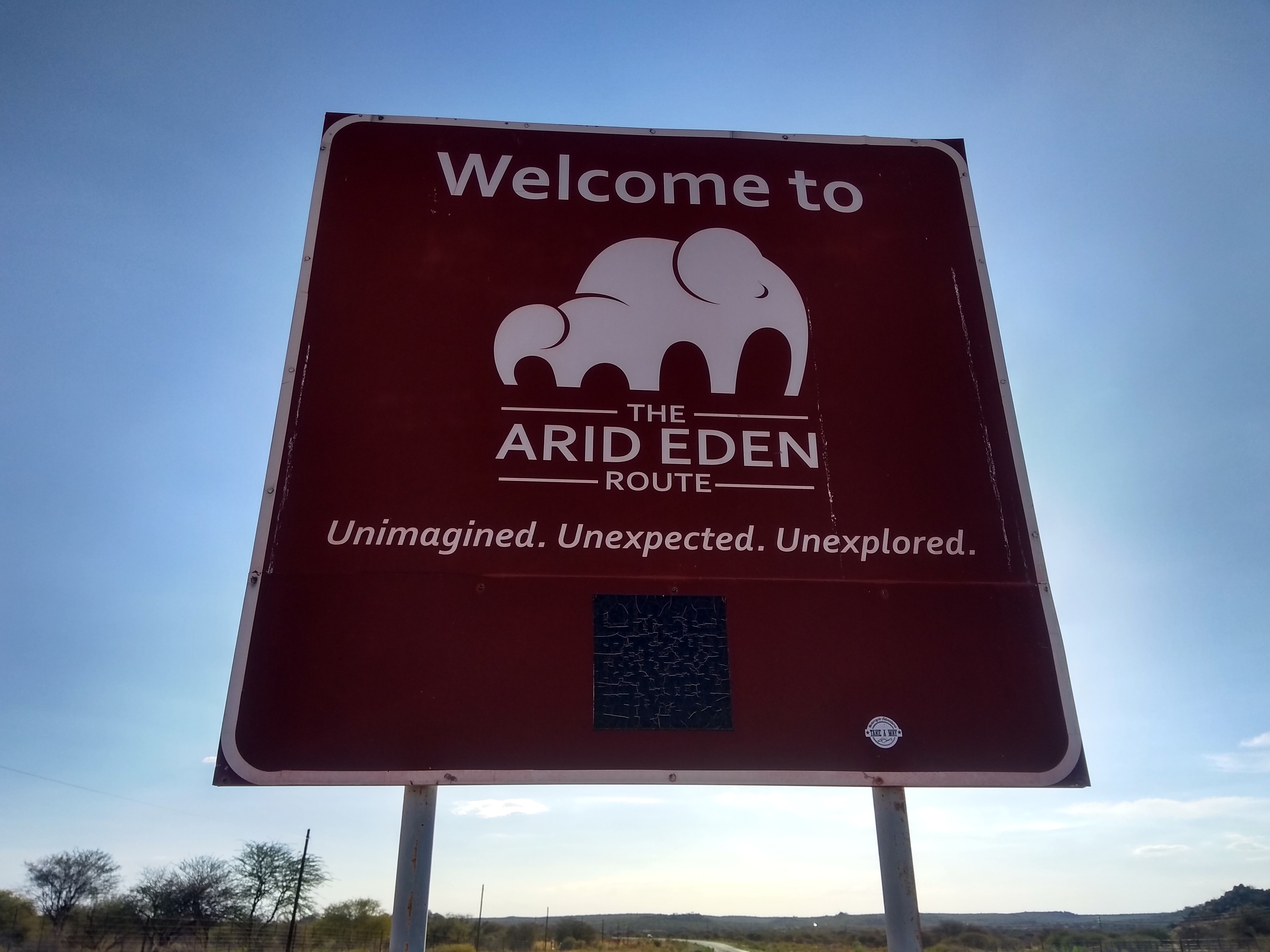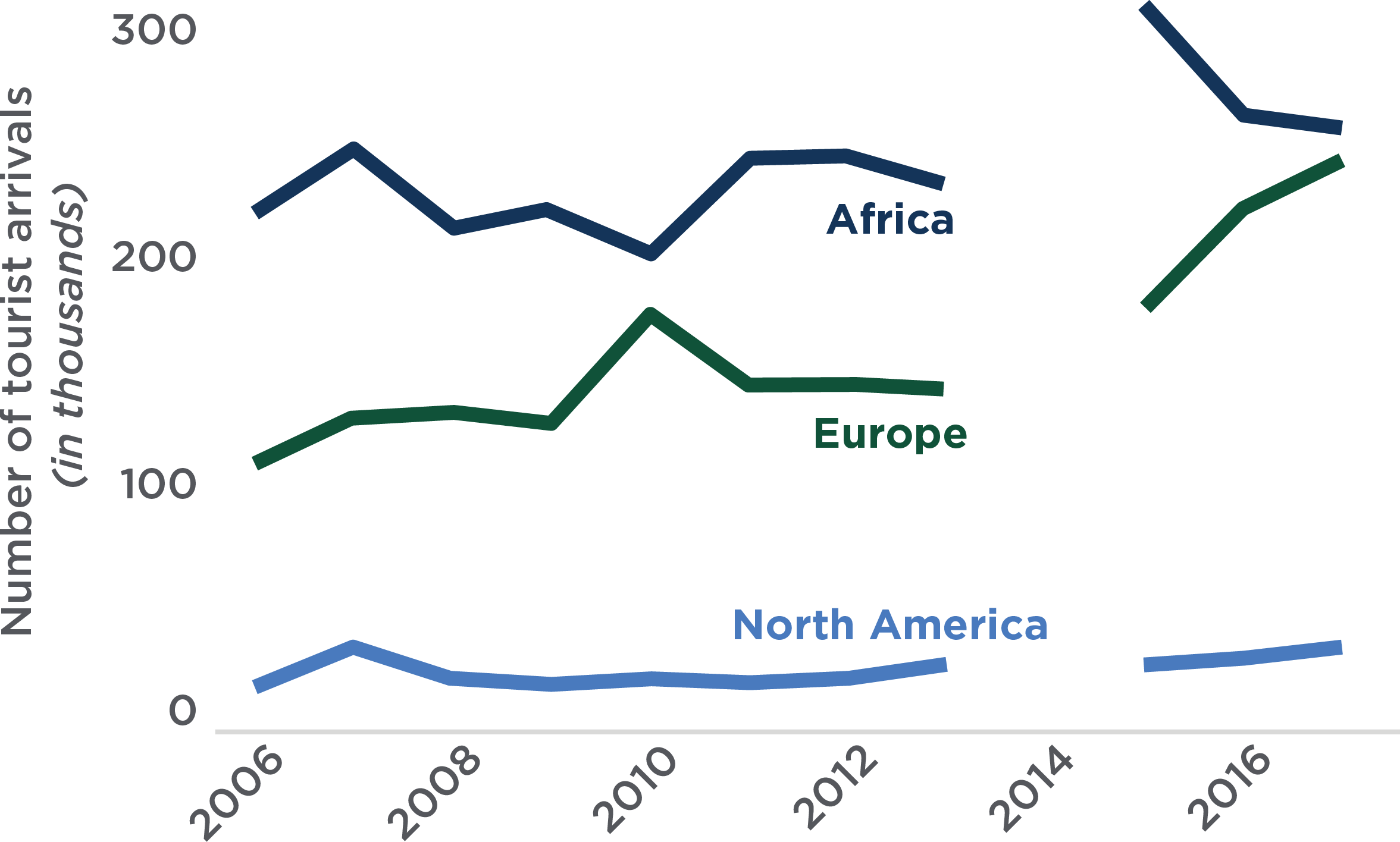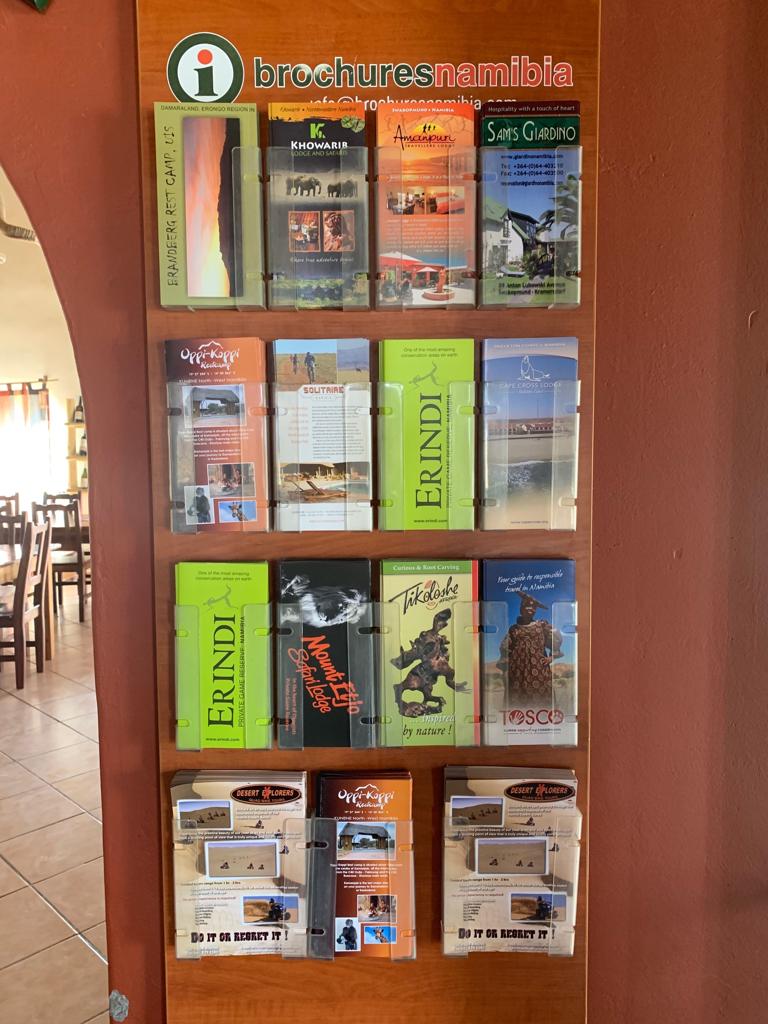Program Overview
MCC’s $305 million Namibia Compact (2009-2014) funded improvements in tourism infrastructure and management and the marketing of Namibia as a tourist destination through two activities under the $69 million Tourism Project. The $8.7 million Tourism Marketing Activity was based on the theory that enhanced promotion of Namibia would increase tourism and generate income and employment opportunities for Namibians.
Evaluator Description
MCC commissioned Abt Associates to conduct an independent final performance evaluation of the Namibia Tourism Marketing Activity. Full report results and learning: https://data.mcc.gov/evaluations/index.php/catalog/243.
Key Findings
Activity Implementation
- The Tourism Marketing Activity was implemented largely according to plan. However, the activity did not address some key barriers to increase tourism, such as the lack of direct flights from North America, whose tourists were targeted by the activity.
Tourist Awareness, Perceptions, and Arrivals
- Awareness of Namibia as a tourist destination was reported to have increased, but only to a small extent. North American tourism to Namibia remains low overall.
Regional Tourism Routes
Sustainability
- The marketing push supported under this activity has not been sustained due to a lack of funds. There was agreement among most travel trade members that significant, sustained increases in tourism would require aggressive marketing to continue over a longer period of time.
- The Namibia Tourism Board operates a locally-hosted website with many of the elements developed during the compact, but fewer interactive features.
Evaluation Questions
This final performance evaluation was designed to answer the following questions.
- 1
Was the Tourism Marketing Activity implemented according to plan? - 2
To what extent did the Marketing Activity change perceptions of Namibia among potential tourists and increase tourist arrivals to Namibia? - 3
To what extent did the development of tourist routes lead to the sustained functioning of those routes and to benefits to enterprises along the routes? - 4
How sustainable are compact investments in tourism marketing?
Detailed Findings
Activity Implementation

A billboard for the Arid Eden route
The Marketing Activity was largely implemented according to plan, though some components experienced delays, and not all aspects were implemented fully or in a sustainable way. Key achievements of the activity included catalyzing new relationships with the tourism industry in North American and providing a set of tools that tour operators could use to continue to promote Namibia.
Tourist Awareness, Perceptions, and Arrivals
Under the North American Destination Marketing Campaign, a range of marketing activities targeted North American and Namibian tour operators and travel agents. Components of the campaign included travel road shows, familiarization trips, and development of online marketing tools.
Survey data from North American travel trade members suggests that the profile of Namibia as a tourist destination among potential tourists in North America rose, and some survey respondents attributed this to the campaign. However, these changes in tourist awareness occurred against a very low baseline, and the extent to which the North American tourist destination marketing efforts were responsible for any changes in perception cannot be conclusively determined since there is no counterfactual against which to compare the changes.
Travel trade members also reported that awareness of and interest in Namibia remains tepid, and there was broad agreement that a more sustained marketing effort over a longer period would have been needed to catalyze real change.

Tourist arrivals to Namibia from 2006 to 2017
Tourist arrivals have tended to increase slightly over time, though there are large year-to-year fluctuations. North American tourist arrivals trended upward both during and after the compact. This upward trend has been small and comparable to the pre-compact trend, so evidence does not support a conclusion that the Marketing Activity caused a general increase in North American tourist arrivals.
Regional Tourism Routes
Three drivable regional tourism routes were established during the last year of the compact to provide ready-made itineraries connecting Etosha National Park and other major tourist destinations in Namibia with tourism products in communal areas, and further unlock tourism opportunities in the country. While the routes had potential, stakeholders reported that their execution was rushed, and there was not enough time for them to evolve into fully functional routes. Most of the Namibian travel trade members the evaluation team surveyed were aware of the routes, but among those who were aware only 40% had ever promoted one or more of them.
The only route any respondent promoted was the Four Rivers Route. The other two routes, according to interviews with local stakeholders, are no longer promoted. In addition, some of the physical infrastructure is no longer operational, including, for example, scannable QR codes corresponding to route websites that tourists could use. Accordingly, the evaluation team found no compelling evidence of benefits to enterprises along the routes.
Sustainability
The Marketing Activity brought exposure to Namibia in the North American market, but some of the components may have suffered from unrealistic expectations about the Namibian government agencies’ capacity to continue support and capitalize on the achievements of the Marketing Activity once MCC funding ended.
For example, the three tourist routes developed under the compact have already largely fallen out of use. The Namibia Tourism Board’s interactive website, which was also developed under the Marketing Activity, is no longer in use due to hosting and maintenance fees that the Namibia Tourism Board was not able to sustain. Instead, the Namibia Tourism Board hired a local firm to develop a replacement website incorporating much of the MCC-funded website’s content.
North American marketing has also wound down. A North American firm was contracted to continue activities for one year after the compact closed, but both this contract and activities such as trade and road shows in North America have been reduced dramatically due to funding constraints.
MCC Learning

Promotional brochures available at a hotel near Etosha National Park
Consider whether the implementation timeline will enable a foundation for success.
Political economy analysis (PEA) and/or Problem Driven Iterative Adaptation (PDIA) approaches to investments may be necessary to clarify existing capacity in the sector and inform a strategy to build the capacity needed to sustain desired changes.
MCC should consider why information systems and technology supported in its compacts frequently encounter sustainability challenges and approach these investments differently.
Evaluation Methods
Abt Associates conducted a mixed-methods, ex-post performance evaluation to assess the activity. The evaluation team used both quantitative and qualitative data in order to triangulate results and draw logical, well-supported conclusions about the project. Different components of the activity were completed at different times, so the exposure period ranges from 54 to 100 months.
Qualitative data were collected through in-country key informant interviews with 27 key informants and focus group discussions with 47 participants (conducted between March and May 2019), a desk review of project documents, and site observation supported by visual material (photos and videos) collected in March 2019. The team used NVivo software to code and conduct ex-post thematic analysis.
The evaluation’s quantitative approach employed both primary and secondary data. Primary data came from three online surveys fielded from April to June 2019: a North American Travel Trade Survey (with a sample size of 32), a Namibian Travel Trade Survey (with a sample size of 18), and a Namibian Enterprise Survey (with a sample size of 20). Since the surveys were not representative, the evaluation team interpreted survey results in concert with qualitative and secondary data to ensure that findings were triangulated to the maximum extent possible.
The evaluation also incorporated quantitative descriptive analysis of secondary data provided by the Ministry of Environment and Tourism from the period 2006-2017. However, many of the data had gaps, such as missing years or inconsistencies. In other cases, data on the specific indicator of interest was not available, so the evaluation team had to rely on proxy indicators. All quantitative data were cleaned and analyzed using Stata software.
2020-002-2453


